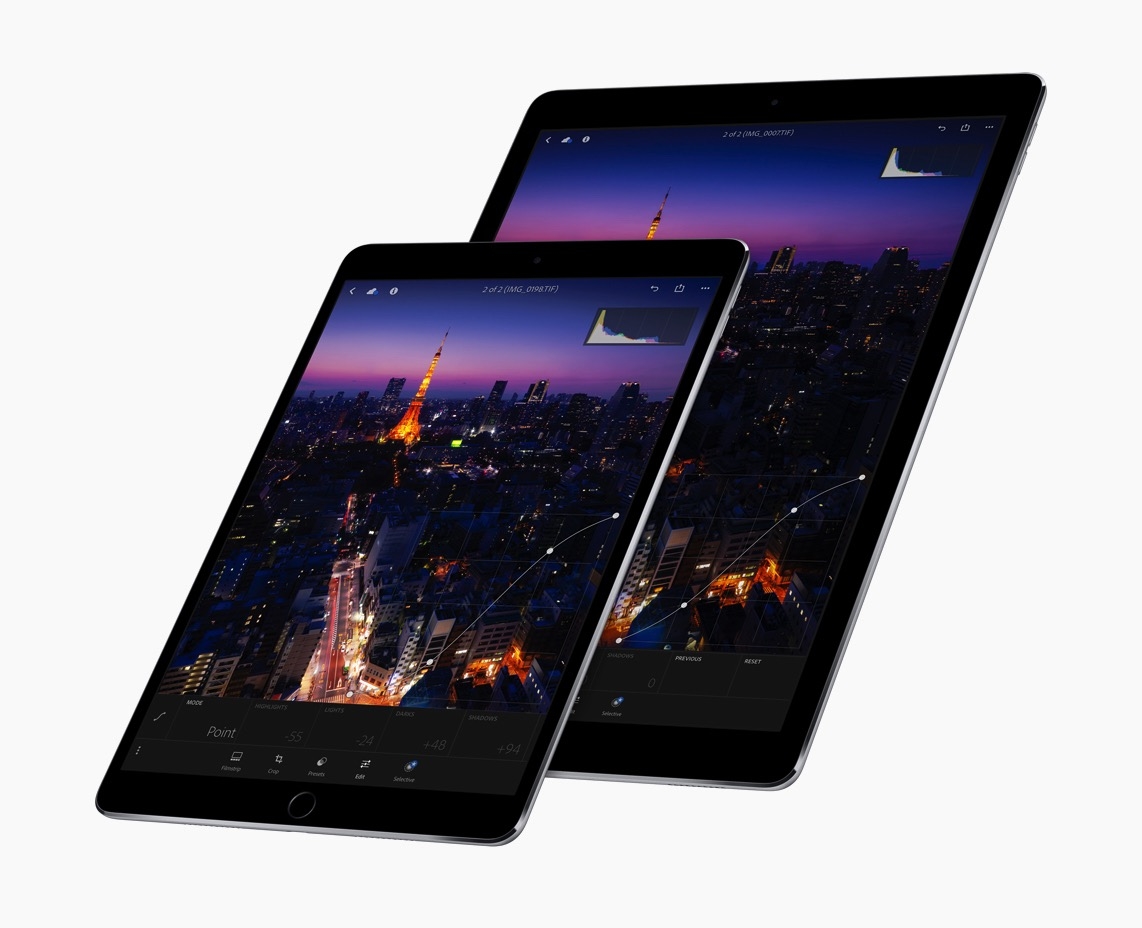

Both of Apple’s iPad Pro tablets received significant upgrades in June. The upgrades included a faster CPU and GPU, more RAM and the option for more storage.
Both iPad Pros now have much better cameras and improved screens which brought a wider color gamut. However, the smaller iPad Pro had its screen size stretched to 10.5 inches by using smaller bezels, which effectively added 20 percent more area, while the screen refresh rates were increased to 120 Hz.
For this reviews I evaluated the 10.5-inch iPad Pro, along with the new keyboard designed to go with this model. The 10.5-inch Pro replaces the 9.7-inch tablet introduced in March, 2016. The improvements are obvious.
The first thing you’ll notice once you turn on the 10.5-inch iPad Pro is that the screen is noticeably larger and the images seem crisper. Scrolling is clearly smoother and animation works smoothly. But there’s a lot more to the new Pro than just better scrolling.
Unfortunately, a lot of what the new iPad Pros have to offer is only going to show up with the arrival of iOS 11, when new features such as an accessible file system arrive. But if you need the other capabilities that would cause you to consider an iPad Pro for your organization, enough improved features are available now to remove any reason to wait.
The new screen on the 10.5-inch iPad Pro is brighter than before and you’d think that the extra brightness coupled with the faster screen refresh rate would shorten battery life, but that’s not the case. Apple has given the new iPad the ability to detect what you’re doing at any given time and to adjust the screen refresh rate accordingly.
For example, the iPad Pro may drop the refresh rate if you’re doing something static or nearly so, such as reading an e-book, but then when you change to web browsing, it can raise the rate again. In addition, for some tasks such as watching videos or movies, the iPad can detect the frame rate of the source and drop the refresh rate to match.
The net result of the iPad’s ability to manage how it processes data is that the battery life is still as long as ever, meaning that the iPad Pro can handle ten straight hours of web browsing before the battery needs a charge.
Apple said that the new iPad screens would include an anti-reflective coating, but that doesn’t mean it doesn’t reflect. What it means is that the new iPad Pros are somewhat easier to use outdoors in daylight. There’s also supposed to be a fingerprint resistant coating, but you’ll still get smudges on the screen.
It’s when I attached the new Smart Keyboard to the 10.5-inch iPad Pro that I noticed how much more suited for business this tablet was when compared to its predecessor.
Apple has made some subtle changes to the keyboard, such as making the primary keys a little larger than they were with the Smart Cover for the 9.7-inch iPad. Notably, the new keyboard has improved feel and improved tactile feedback, which means that you can touch-type on this keyboard without having to retrain yourself.
The Apple Pencil is unchanged from when it was released with the original 12.9-inch iPad Pro back in 2015. However the faster screen refresh rate and the faster A10X processor significantly reduce the latency that used to make the Pencil somewhat annoying to use. Now the 20 millisecond latency is the same as the pen on the new Microsoft Surface.
I’d been using the 12.9-inch iPad Pro since that tablet first came out in November 2015. The 9.7-inch iPad Pro had an improved screen and some other features, but they weren’t enough to make me run out and buy one. The new 10.5-inch version is much better and worth considering even without the improvements coming in iOS 11. Those improvements will include a Macintosh-like application dock.
A few other things have changed with the new iPads. They come with more storage, starting at 64 GB (previously it was 32 GB) and ranging up to 512 GB. The cellular radios can handle more bands and they are more expensive, starting at a $50 boost for WiFi-only versions of the 10.5-inch iPad Pro over equivalent versions of the 9.7-inch iPad Pro.
This means that you can spend well over $1,000 for the upper end of the 10.5-inch iPad Pro with a cellular radio. Add to that the cost of the Smart Keyboard and the Apple Pencil, and you’re looking at serious money for a tablet.
But this is a serious tablet. The smaller iPad Pro has finally reached the point where it’s more than just a gussied-up version of the consumer tablet. You can now rationally consider this iPad Pro to be a laptop replacement, or at least an alternative. You could take only the iPad Pro on a business trip and know that you could still get your work done.
The 10.5-inch iPad Pro is now a worthy alternative to its larger sibling and in a situation where keeping size and weight under control is important, then it may be the better choice.
Elon Musk sells social media platform X to his AI start-up xAI in a move…
TikTok opens e-commerce shopping in Germany, France, Italy as US future remains uncertain over divest-or-ban…
Discover expert insights on overcoming digital transformation challenges. Learn how to manage change, balance innovation,…
Microsoft drops data centre projects amounting to 2 gigawatts of power consumption as investors question…
SMIC sees revenues rise 27 percent for 2024, but profits fall nearly 50 percent amidst…
Google reassures developers Android to remain open source as it brings development entirely in-house, reduces…